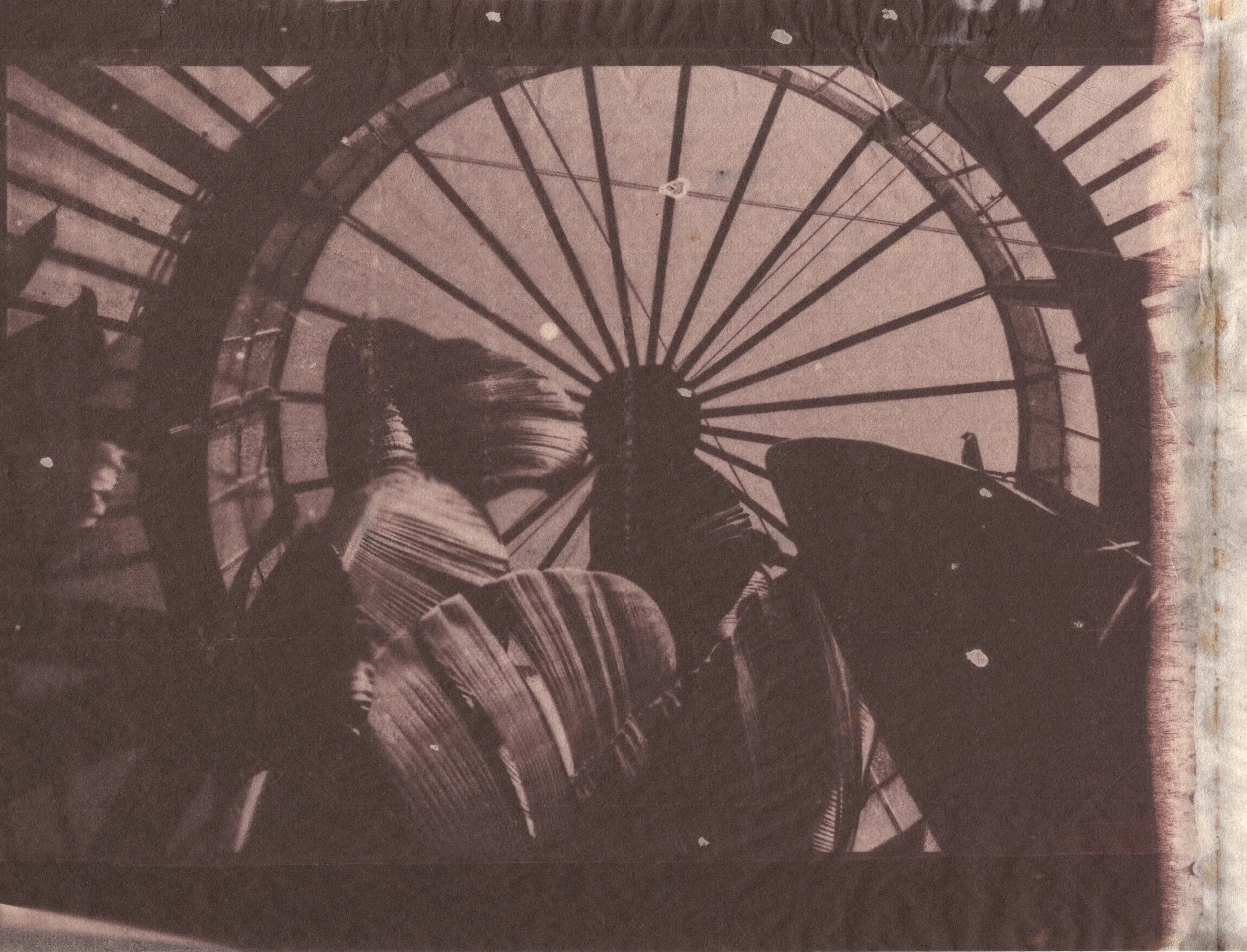I’ve been doing a lot of experimenting recently with printing methods, specifically the salt printing process. Firstly because it is simple and I have the chemistry on hand, and secondly because it has an infinite number of things you can do wrong, which I like. In my experiments with using different papers, I found an unlikely candidate for my favourite.
Hanshi (半紙) is the most common Japanese calligraphy paper. It is thin, with a rough and smooth side, and a texture almost similar to tissue paper. Because of this, the common technique (for me at least) of brushing salt solution and silver nitrate on the paper isn’t feasible, its just too delicate. Instead, the technique of dragging the papers through baths of the necessary chemicals and then gently gently hanging them to dry on a fishing wire clothesline was the best method I developed.
Here are some misprints:
This one used a bad negative transparency which I had inadvertently put fingerprints on, as well as over contrasted. I had upped the contrast on the negative because I didnt expect the Hanshi paper to transfer as much detail as it was able to.
This second one was fixed in Ilford rapidfixer which took a lot of the density of the print away, and clouded the remaining image
next are some side by side examples of post-processing like toning and fixing with Sodium Thiosulphate



















